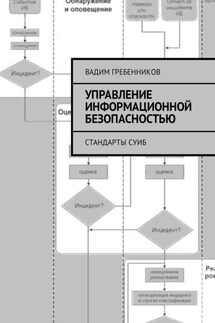IT Cloud - страница 66
essh @ kubernetes-master: ~ / node-cluster $ curl 35.197.220.103
terraform-nodejs-6bd565dc6c-mm7lh
essh @ kubernetes-master: ~ / node-cluster $ curl 35.197.220.103
terraform-nodejs-6bd565dc6c-8768b
essh @ kubernetes-master: ~ / node-cluster $ curl 35.197.220.103
terraform-nodejs-6bd565dc6c-hr5vg
essh @ kubernetes-master: ~ / node-cluster $ curl 35.197.220.103
terraform-nodejs-6bd565dc6c-8768b
essh @ kubernetes-master: ~ / node-cluster $ curl 35.197.220.103
terraform-nodejs-6bd565dc6c-mm7lh
Now let's move on to implementing the NodeJS server:
essh @ kubernetes-master: ~ / node-cluster $ sudo ./terraform destroy
essh @ kubernetes-master: ~ / node-cluster $ sudo ./terraform apply
essh @ kubernetes-master: ~ / node-cluster $ sudo docker run -it –rm node: 12 which node
/ usr / local / bin / node
sudo docker run -it –rm -p 8222: 80 node: 12 / bin / bash -c 'cd / usr / src / && git clone https://github.com/fhinkel/nodejs-hello-world.git &&
/ usr / local / bin / node /usr/src/nodejs-hello-world/index.js'
firefox http: // localhost: 8222
Let's replace the block in our container with:
container {
image = "node: 12"
name = "node-js"
command = ["/ bin / bash"]
args = [
"-c",
"cd / usr / src / && git clone https://github.com/fhinkel/nodejs-hello-world.git && / usr / local / bin / node /usr/src/nodejs-hello-world/index.js "
]
}
If you comment out a Kubernetes module, and it remains in the cache, it remains to remove the excess from the cache:
essh @ kubernetes-master: ~ / node-cluster $ ./terraform apply
Error: Provider configuration not present
essh @ kubernetes-master: ~ / node-cluster $ ./terraform state list
data.google_client_config.default
module.Kubernetes.google_container_cluster.node-ks
module.Kubernetes.google_container_node_pool.node-ks-pool
module.nodejs.kubernetes_deployment.nodejs
module.nodejs.kubernetes_service.nodejs
essh @ kubernetes-master: ~ / node-cluster $ ./terraform state rm module.nodejs.kubernetes_deployment.nodejs
Removed module.nodejs.kubernetes_deployment.nodejs
Successfully removed 1 resource instance (s).
essh @ kubernetes-master: ~ / node-cluster $ ./terraform state rm module.nodejs.kubernetes_service.nodejs
Removed module.nodejs.kubernetes_service.nodejs
Successfully removed 1 resource instance (s).
essh @ kubernetes-master: ~ / node-cluster $ ./terraform apply
module.Kubernetes.google_container_cluster.node-ks: Refreshing state … [id = node-ks]
module.Kubernetes.google_container_node_pool.node-ks-pool: Refreshing state … [id = europe-west2-a / node-ks / node-ks-pool]
Apply complete! Resources: 0 added, 0 changed, 0 destroyed.
Terraform Cluster Reliability and Automation
For a general overview of automation, see https://codelabs.developers.google.com/codelabs/cloud-builder-gke-continuous-deploy/index. html # 0. We will dwell in more detail. Now if we run the ./terraform destroy and try to recreate the entire infrastructure from the beginning , we will get errors. Errors are received due to the fact that the order of creation of services is not specified and terraform, by default, sends requests to the API in 10 parallel threads, although this can be changed by specifying or removing the -parallelism = 1 switch during application or removal . As a result, Terraform tries to create Kubernetes services (Deployment and service) on servers (node-pull) that do not yet exist, the same situation when creating a service that requires proxying a Deployment that has not yet been created. By telling Terraform to request the API in a single thread ./terraform apply -parallelism = 1, we reduce possible provider-side restrictions on the frequency of API calls, but we do not solve the problem of lack of order in which entities are created. We will not comment out dependent blocks and gradually uncomment and run ./terraform apply , nor will we run our system piece by piece by specifying specific blocks ./terraform apply -target = module.nodejs.kubernetes_deployment.nodejs . We will indicate in the code the dependencies themselves on the initialization of the variable, the first of which is already defined as external var.endpoint , and the second we will create locally:








